| » BROJ 87 |
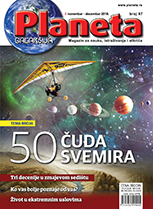 |
Godina XVI
Novembar - Decembar 2018.
|
|
| » Glavni naslovi |
SUMMARY
THEME OF NUMBERS
55 marvels of the universe |
|
 |
Since the creation of the universe to today, barely understandable changes have been taking place in a universe so little known to the human mind. Our species has been growing along with collisions of celestial bodies, meteor strikes, solar winds, volcano eruptions and many other things on remote planets. And it has survived up to this day when, thanks to the development of thoughts and technical achievements, we are able to look into this vast world in which we, being so tiny, can barely exist. On one side are people and their planet - on the other is the vast space of the universe, pressing and threatening with its undiscovered secrets. What does this mysterious space look like? What changes are there that we today know about only vaguely? What can we say about it in 55 notions?
|
SOLAR SYSTEM
Life on planets and satellites |
|
 |
The scientific idea of the Solar System, thanks to the data sent by cosmic probes, has undergone a real revolution in relation to the pre-cosmic flight scene. Answers have been discovered, to numerous questions about our closest cosmic neighborhood, even if mostly unexpected, but some new questions have also arisen. The most important of the oldest questions still remains unanswered: except on Earth, is there life on any planet or natural satellite in the solar system?
Life on Earth is now the only one we know of and, according to the physical and chemical conditions necessary for its survival, scientists estimate whether it could exist on another planet in our closest cosmic neighborhood. It is certain that there cannot be life where there is no surface liquid water or water in the interior of a celestial body such as: Mercury, the Moon, volcanic Io, numerous asteroids and smaller natural satellites.
|
CONQUERING THE UNIVERSE
Reaching the stars by nuclear power |
|
 |
The British Interplanetary Society, the oldest organization in the world dealing with space, launched a five-year research effort in 1973, the purpose of which is to design an unmanned spacecraft capable of carrying interstellar flights. The "Dedal" project was the first attempt to catch up with the possibility of interstellar travel. The goal of the project was to detect the feasibility of human transport to different star destinations, all with the help of the technology of the near future, within its lifetime.
Difficulties in reaching speeds within the desired time, creating enough energy without completely burning up the aircraft, are difficult to overcome. A team of scientists working on the Dedal project eventually selected a nuclear-missile launcher capable of overcoming these limitations. Smaller nuclear bombs will be detonated within magnetic fields in the form of a horn behind a craft, which will allow more efficient and currently available propulsion for humanity. The achieved speed should be ten thousand kilometers per second in order to successfully complete the mission. And that's just a small part of the challenge.
|
IT
Who knows you better than you know yourself? |
|
 |
A whole range of different IT services based on information technology has one common aspect - they cannot be used anonymously. The usual cost of using these services is - your privacy.
From a multitude of examples, we choose a bizarre one. In March 2012, Bradley Voytek, a Uber scientist, came up with the idea that it would be fun to publish the results of an analysis of data on Uber users by detecting those who had the so-called “one -night stand”. From Uber's database, the users who satisfied the following form were selected: they ordered a ride in a time interval between 10 am and 4 am (Friday or Saturday), and 4-6 hours later, another one, located in a circle of 160 m (i.e. a tenth of a mile) from the place where they completed the previous ride.
The analysis found that residents of Boston have five times more one night stands per night than New Yorkers, and that the number of connections per night declines around Valentine's Day, but rises around the time for tax refunds, etc.
;
|
BIOLOGY Life in extreme conditions |
|
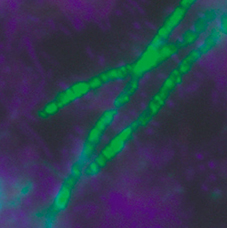 |
In a Mexican cave system that is so beautiful but also so hot that it has two nicknames: "paradise" and "hell," scientists have discovered a form of life trapped in a crystal, probably 50,000 years old. Whether an organism will grow and how successfully it will multiply in a particular environment, depends on its ecological valence. Ecological valence is the volume of the fluctuation of ecological factors within the limits of the survival and life possibilities of microorganisms.
The usual notion of the living world of our planet puts it in a relatively narrow and familiar framework of the conditions of the environment of a certain temperature, pressure, acidity ... However, there is a growing interest in a group of organisms that can be found in conditions that at first glance are completely incompatible with the idea of life in them. Such organisms are called extremophiles. Extremophiles are organisms that have the ability to grow and multiply under unfavorable environmental conditions.
|
ZOOLOGY
Preservation of endangered species |
|
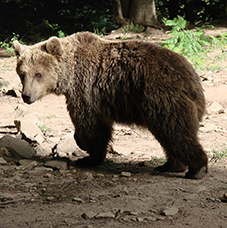 |
Serbia is the only country in Europe whose territory is inhabited by three brown bear populations. The west and southwest of Serbia ared inhabited by the Dinaric-Pindic population, the northeast is inhabited by Carpathians, and the eastern part of Serbia is inhabited by the east Balkan population of bears. How many bears there actually are in Serbia is hard to estimate just because the "bearish state" does not recognize human political borders ...
A brown bear named Miloje, who was given satellite GPS / GSM collar in April 2007, "won" in only 39 days one of the largest registered areas among bears in Eastern and Southern Europe - - 4,366.5 km2! His transition encompassed the territory from Tara, to the southeast, to the surroundings of Raska and back to the surroundings of Han Pjesak in Bosnia and Herzegovina, where the collar stopped sending data. It has crossed 1.794,5 km!
|
NUTRITION
Plants discover migration routes |
|
 |
The emergence of agriculture is one of the most important stages in the development of human society, since it enabled the establishment of communities in the form of settlements, the specialization of labor and technological innovation.
One of the centers of agricultural origin is the Middle East, where barley existed about 10,500 years ago, along with wheat and other yields. Archaeological findings indicate that barley cultivation has spread to the ecological borders in Europe, North Africa, Central, South and East Asia, over a period of approximately 6000 years. New results published in PLOS ONE show that various types of barley, designed for various uses, and adapted to different ecological conditions and harvesting regimes, spread across Eurasia in diverse routes. In many cases, there are archeological and archeobotanical evidence for these expansion routes.
|
Kompletni tekstove sa slikama i prilozima potražite u magazinu
"PLANETA" - štampano izdanje ili u ON LINE prodaji Elektronskog izdanja
"Novinarnica"
|
|
|
» Prijatelji Planete |
| » UZ 100 BR. „PLANETE” |
|

|
| » 20 GODINA PLANETE |
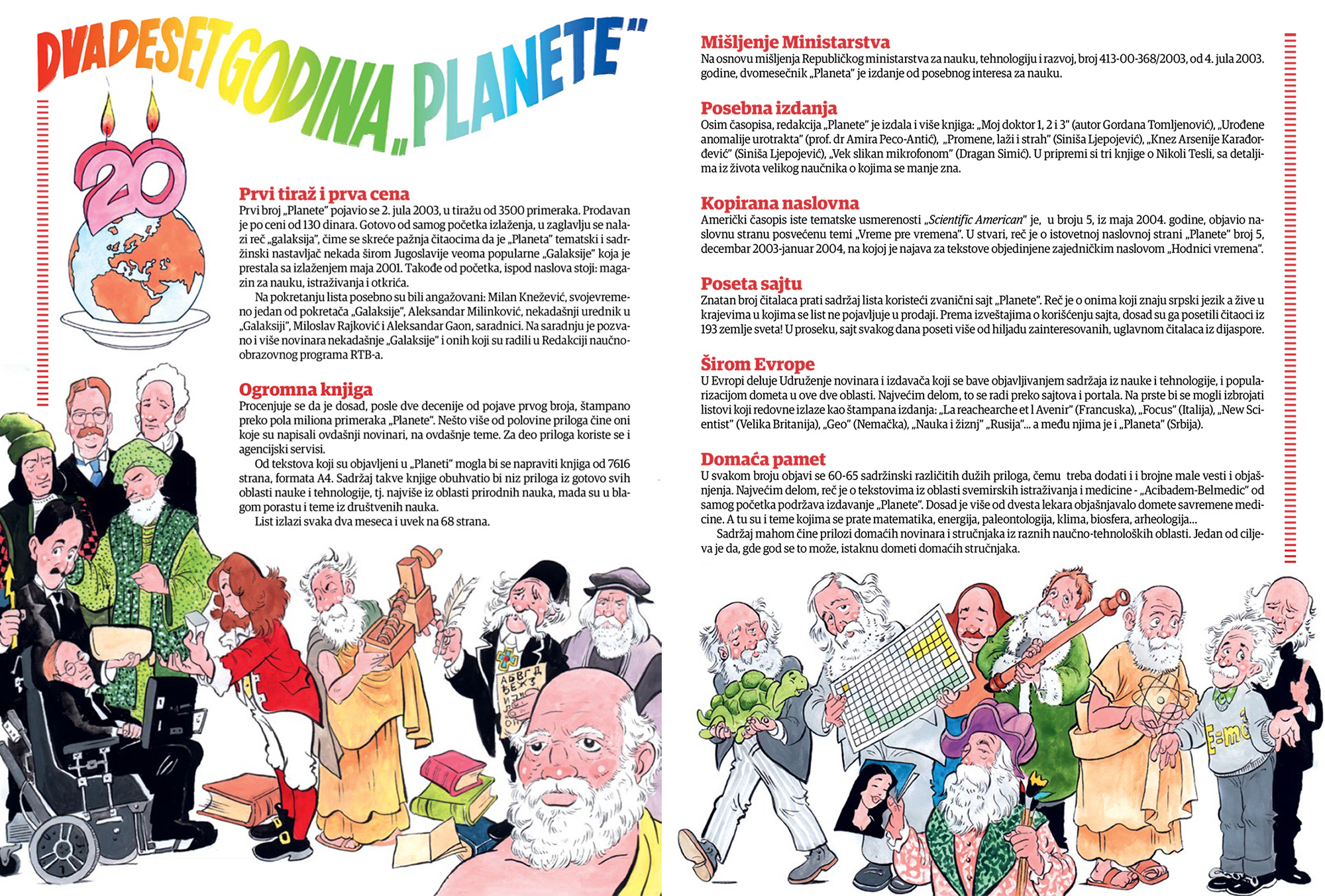



6 digitalnih izdanja:
4,58 EUR/540,00 RSD
Uštedite čitajući digitalna izdanja 50%
Samo ovo izdanje:
1,22 EUR/144,00 RSD
Uštedite čitajući digitalno izdanje 20%
www.novinarnica.net
Čitajte na kompjuteru, tabletu ili mobilnom telefonu

|
| » PRELISTAJTE |
NOVINARNICA predlaže
Prelistajte besplatno
primerke
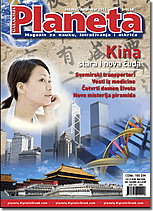
Planeta Br 48
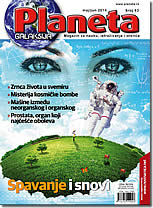
Planeta Br 63
|
| » BROJ 120 |
 |
Godina XXI
Novembar - Decembar 2024.
|
|
|

